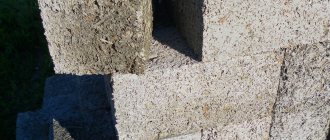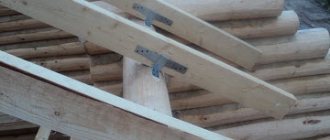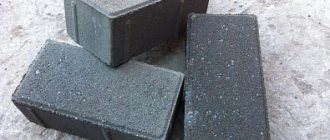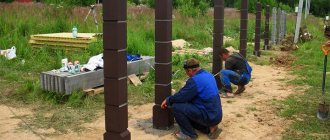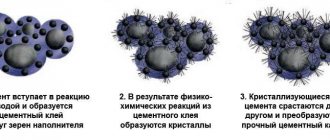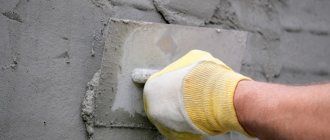For those who are looking for a way to create a business at home, the production of gas silicate blocks will be a profitable solution. Today you will get acquainted with the features of producing gas silicate and learn how to open such a business.
OKVED codes required when registering individual entrepreneurs for this type of activity: 26.61: Production of concrete products for use in construction; 26.66: Production of other products from concrete, gypsum and cement; 51.53: Wholesale trade in timber, construction materials and sanitary equipment.
Material Specifications
Gas silicate blocks are a high-quality building material. They are characterized by low cost, environmentally friendly production and low weight. These qualities have allowed the material to gain wide popularity in the construction industry.
The blocks have high strength, and thanks to the cellular structure, gas silicate can have a density from 300 kg/m³ to 700 kg/m³, evenly distributed throughout the block, which also increases the popularity of this product among construction companies.
Advantages and disadvantages
Positive technical characteristics of gas silicate blocks:
- environmental safety; light weight combined with high strength; low thermal conductivity; high noise absorption rates; geometric dimensions are accurate, the surface is flat, which makes it possible to avoid adjustments during installation; resistance to rotting and burning; ease of transportation and processing (can be drilled, sawed, cut , trim, groove).
Gas silicate materials can be used for the construction of external and internal walls. There are blocks for constructing window and door openings and the ability to produce materials of non-standard sizes to order.
The only drawback of gas silicate is the impossibility of using it at a humidity of more than 60% (due to the high water absorption rate).
Requirements for production premises
The room allocated for the production of gas silicate blocks with your own hands must meet certain requirements. To store raw materials and finished products, you will need a specially designated place. The height of the room must be at least three meters.
Also, tech. the process requires the presence of 380V and 220V electrical networks, water supply and access roads. The room itself must be insulated and cleaned of dirt and debris.
The production of gas silicate is considered waste-free, so there is no need for sewerage on the territory of the mini-plant.
Equipment for the production of gas silicate blocks
To organize a mini-factory in a garage or small rented premises, you will need the following machines for the production of gas silicate blocks:
- Vibrating sieve
- Industrial autoclave;
- Block molds;
- Ball mill;
- Dosing hopper;
- Concrete mixer.
Equipment price
Where and at what price can you buy good equipment for the production of gas silicate? Let's look at this issue in more detail:
- Vibrating sieve for sifting sand. Inexpensive options that take up little space are suitable, such as: vibrating sieve VO-1, manufactured by Aver-Irkutsk, power 0.25 kW - $320, vibrating sieve VO-01, LLC "Construction Equipment" - $370, vibrating table VS-250, Stroymashservice-Don – $575, option without vibrator, Stroytekhnopolis – $125, machine from Elsie-Stroy – $520, VIBROMASH VO-1, Delta-engineering – $450;
- Ball mill . Uralmash MShTs-210*3000 – $1,740, Uralmash MSTs-3600*4500 – $1,740, ball mill MShMP-0.8 – up to $5,750, mill from JSC Parity of dry grinding – $3,710; CJSC Parity wet grinding – $3310;
- Dispensers . Bunker - dispenser BD-30 from the Zlatoust Concrete Mixing Equipment Plant - $5,750, Bunker dispenser for a concrete mixer from NPO KSK - $1,130;
- Concrete mixer . Options from companies: Kit-YUG – $90, B 130 “Enthusiast” – $180, Afalina Chelyabinsk – $225, TOR 46l. From the TOP Trading House – $125;
- Forms . Metal cassette molds for cellular concrete from Krasnoyarsk, company TSK Group - $185, Metal cassette mold Stroy Mechanica Kirov - $315, "Standard-1" mold, for 36 blocks - $350;
- Autoclave . Machine produced by UralTsentrKomplekt Ag-1200 tz - $43,550, pass-through autoclave AP 1.2 - 2*17, produced by Stroykompleks Brik - $26,135.
To buy a high-quality machine for the production of gas silicate blocks, you will have to carefully choose the option that suits you and compare their power and productivity.
To compare prices and technical characteristics of production machines, it is recommended to study the foreign market.
We advise you to pay special attention to equipment from China. Such equipment for the production of gas silicate is distinguished by a wide range and affordable price.
Commercial offers
If you are a manufacturer or supplier of equipment, an expert or provide a franchise in this field, then write to us through the Contact page. Below we will post information about your offer and your contacts.
Save this article to your bookmarks. It will come in handy;) Follow updates on Facebook:
Follow VKontakte updates:
→ 08.05.2014
Attention! The page only publishes reviews that are useful to others and indicate that the person had experience in this matter. Thank you very much in advance if you share your precious experience with our readers!:)
- Date: 03/17/2015 Comments: Rating: 39
Various materials are used in construction, but special cellular concrete is especially popular. Laying gas silicate blocks does not take much time; the design is distinguished by its quality and excellent thermal insulation characteristics.
Characteristics of aerated concrete blocks.
What does a gas silicate block consist of? It is made from:
- quartz sand; Portland cement; lime; clean water.
The blocks are produced using a factory method, the solution is mixed in special mixers. To obtain a homogeneous mass, special aluminum powder is added, after which stirring continues. The finished solution is poured into molds; it should lie for a couple of hours while a reaction occurs between the lime and the added powder.
This process gives rise to the formation of cells filled with gas - this is how aerated concrete is created. After hardening, the blocks are cut with strings and placed in an autoclave with a pressure of 10-12 bar and a temperature of 190°C. In this way, the required density of the material is achieved.
Technology for the production of gas silicate blocks
For production, in addition to equipment, you will need knowledge of manufacturing technology and proportions of raw materials.
The production process of gas silicate blocks
The process is quite simple to perform. If the proportions are observed and the technology is carried out correctly, a high-quality product will be obtained.
- Using a vibrating sieve, separate the bulk material from excess fragments;
- Grind raw materials for the production of gas silicate blocks in a ball mill;
- Observing the proportions, mix all the bulk ingredients, except for the aluminum suspension;
- Re-sieve;
- Add aluminum powder and water, mix thoroughly;
- Fill the molds with the mixture to ½ of the total volume of each of them;
- Leave the molds with the mixture at a temperature of at least 40° for 2 hours;
- Process the blocks using an autoclave;
- Leave for 3 hours to complete chemical processes and gain strength.
If you want to produce aerated concrete blocks in accordance with interstate standards, then read the provisions of GOST 31360-2007, 21520-89, 25485–89, 31359, which describe the requirements for unreinforced wall products made of autoclaved cellular concrete.
You can find various sizes of gas silicate blocks on sale, but according to GOST 31360 , the size of each block must comply with the following standards: length - 625 mm, width - 500 mm, height - 500 mm.
Proportions of ingredients for making the mixture
Let's look at what gas silicate blocks are made of. To produce 1 cubic meter of gas silicate mixture, you will need ingredients in the following proportions: water - about 450 liters, cement - 60 kg (from 8% to 10%), quartz sand - 450 kg (up to 70%), gypsum - 0.5 kg ( up to 2%), lime - 120 kg (the percentage of lime is 12% to 20%), as well as aluminum powder - 0.5 kg (up to 2%).
To achieve the highest density of the material, the proportion of pores should be no more than 38%; such a building block is suitable for capital construction.
With an average density, gas silicate is a material with a pore fraction of no more than 52%.
The maximum permissible porosity of a light cellular material will be up to 92%. In the latter case, the use of gas silicate blocks is permissible only for thermal insulation.
Investments:
Vibrating sieve – $450; Ball mill – $5,750; Hopper-doser for concrete mixer – $1,130; Concrete mixer – $225; Forms – $350;
Autoclave - $26,135.
Total: $34,040
Costs per 1 cubic meter of raw materials:
Water – 450l. – $0.6; Cement – 60kg – $2.5; Quartz sand – 450kg – $7.8; Gypsum – 0.5kg – $0.1; Lime – 120kg – $6.2;
Aluminum powder – 0.5 kg – $0.1.
Total: $17.3/1 cubic meter. m.
The production volume at our mini-factory will be 1500 cubic meters. m per month, sales price for 1 m³ - $45.
If fully implemented, the monthly income will be $67,500. Net profit – $24,250 per month. Taking into account the factors accompanying the production and sale of goods, investments in a small private plant will pay off in 3 months of operation.
Let's summarize. Analyzing the volume of profit and the payback period of investments, we can say that gas silicate blocks as a business are a profitable enterprise with a high profitability ratio.
Did you like the article?
Share with friends: The technology for manufacturing gas silicate blocks is time-tested and fully automated; the modern equipment offered allows you to quickly obtain products ready for laying with a minimum of labor costs.
The starting investment depends on the configuration; if desired, the products are formed even at home, but the best productivity and quality are achieved when the full line is launched in the factory. The raw materials are available natural materials: cement, sand, lime, gypsum, waste and trimmings can be reused in the next batch. With an established sales system, the estimated payback period is 4 months.
Table of contents:
Manufacturing technology
The production of blocks includes the stage of preparing raw materials (careful sifting, grinding sand), obtaining sand sludge and mixing it with other components, including the main foaming agent - aluminum powder, pouring into molds and holding, cutting, autoclave processing and packaging.
The density, cell sizes and other characteristics of gas silicate are regulated by changing the composition; strict adherence to proportions is one of the main requirements of the technology. The prepared aerated concrete mixture remains in the molds for 3-4 hours, during which swelling occurs, the required ambient temperature is +40 °C. The process lasts until the end of hydrogen evolution; before stripping, the mixture is kept for at least another hour.
The performance characteristics of the products directly depend on the quality of the subsequent stages of the technology scheme: geometric dimensional accuracy, strength, frost resistance and others.
At the molding stage, the edges are cut off from future gas silicate blocks and, if necessary, grooves are made. At home, it is difficult to achieve the required evenness; correct cutting is only possible using strings or milling machines. The advantage of production in this case is waste-free.
The resulting gas silicate blocks require heat treatment with steam at high pressure.
To achieve the conditions (+200°C, 10-12 atm), they are placed in special chambers - autoclaves. This treatment enhances air exchange between the cells and strengthens their walls; the products retain heat better and resist moisture. Blocks made on their own (the so-called home aerated concrete), without being placed in autoclaves, are significantly inferior in strength and precision of shape and are only suitable as thermal insulation.
Production of gas silicate blocks at home
Such production is possible if there is a premises that meets the relevant requirements.
Blocks made at home are inferior in quality to goods produced on a production line.
First of all, this is due to the technical characteristics of the equipment used. But it should be noted that gas silicate produced by a small private plant is no less in demand than factory-made, due to its affordable price and slight difference in the quality of the building material.
Profitability
To produce one cubic meter of gas silicate you need:
- 10.25 kg of cement – 350 rubles; 0.9 m3 of sand – 87.50 rubles; 0.1 m3 of quicklime – 150 rubles; aluminum paste – 300 rubles; electricity – 125 rubles; salary – 500 rubles .
The cost also includes rent, utilities and other operating expenses.
This means that the cost of one cubic meter of gas silicate is approximately 2,000 rubles. The average market price of gas silicate blocks is 3,000 rubles per cubic meter.
Income from one cubic meter is approximately 1000 rubles. The line described above allows the production of 2500 m3 of gas silicate per month. This means that the initial investment will pay off in about half a year when the workload reaches 50% and provided that all manufactured products are sold.
